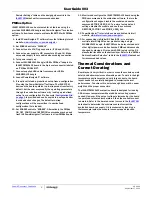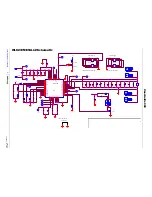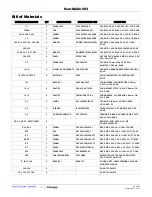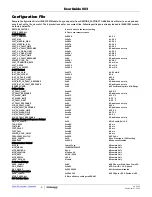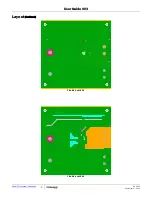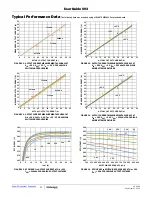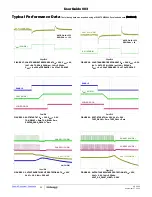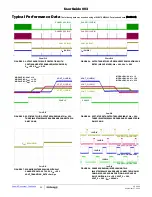
User Guide 003
2
UG003.0
September 17, 2014
Submit Document Feedback
Recommended Equipment
• DC power supply with minimum 15V/25A sourcing capacity
• Electronic load capable of sinking current up to 50A
• Digital multimeters (DMMs)
• Oscilloscope with higher than 100MHz bandwidth
Functional Description
The ISL8272MEVAL1Z provides all circuitry required to evaluate
the features of the ISL8272M. A majority of the features of the
ISL8272M, such as compensation-free ChargeMode™ control,
soft-start delay and ramp times, supply sequencing, and voltage
margining are available on this evaluation board. For sequencing
evaluation, the board can be connected to any Intersil digital
module evaluation board that supports the DDC bus.
Figures 1
and
2
show the board images of the ISL8272MEVAL1Z
evaluation board.
Quick Start Guide
Pin-Strap Option
ISL8272MEVAL1Z can be configured in pin-strap mode with
standard 1% 0603 resistors. PMBus interface is not required to
evaluate ISL8272M in pin-strap mode. Output voltage (V
OUT
),
switching frequency (f
SW
), soft-start/stop delay and ramp time,
input undervoltage protection (UVLO) threshold, ASCR gain and
residual, and device PMBus address can be changed by
populating recommended resistors at placeholders provided in
the evaluation board. By default, the evaluation board operates
in pin-strap mode and regulates at V
OUT
= 1.2V, f
SW
= 421kHz,
soft-start/stop delay time = 5ms, soft-start/stop ramp
time = -5ms, UVLO = 4.5V, ASCR gain = 200, ASCR residual = 90
and PMBus address = 28h. Follow these steps to evaluate
ISL8272M in pin-strap mode.
1. Set ENABLE switch to “DISABLE”.
2. Connect Load to VOUT lug connectors (J7-J8 and J9-J10).
3. Connect power supply to VIN connectors (J5 and J6). Make
sure power supply is not enabled when making connection.
4. Turn power supply on.
5. Set ENABLE switch to “ENABLE”.
6. Measure 1.2V VOUT at probe point labeled “VOUT
REGULATION MONITOR” (J11).
7. Observe switching frequency of 421kHz at probe points
labeled “PHASE1” (TP10) and “PHASE2” (TP11).
8. To measure the module efficiency, connect the multimeter
voltage probes at probe points labeled “VIN” (TP1), “GND”
(TP2) and “VOUT” (TP12).
9. To change VOUT, disconnect board from the setup and
populate a 1% standard 0603 resistor at RVSET placeholder
location on bottom layer. Refer to the “Output Voltage
Resistor Settings” table in the
ISL8272M
datasheet for
recommended values. By default, VOUT_MAX is set to 110%
of VOUT set by pin-strap resistor.
10. To change switching frequency, disconnect board from the
setup and populate a 1% standard 0603 resistor at RFSET
placeholder location on bottom layer. Refer to the “Switching
Frequency Resistor Settings” table in the
ISL8272M
datasheet for recommended values.
11. To change soft-start/stop delay and ramp time, disconnect
board from the setup and populate a 1% standard 0603
resistor at R6 placeholder location on bottom layer. Refer to
the “Soft Start/Stop Resistor Settings” table in the
ISL8272M
datasheet for recommended values.
12. To change UVLO, disconnect board from the setup and
populate a 1% standard 0603 resistor at R6 placeholder
location on bottom layer. Refer to the “UVLO Resistor Settings”
table in the
ISL8272M
datasheet for recommended values.
Notice that the UVLO programming shares the same pin with
soft-start/stop programming.
13. To change ASCR gain and residual, disconnect board from the
setup and populate a 1% standard 0603 resistor at R7
placeholder location on bottom layer. Refer to the “ASCR
FIGURE 2. BOTTOM SIDE
RESISTOR PLACEHOLDERS



